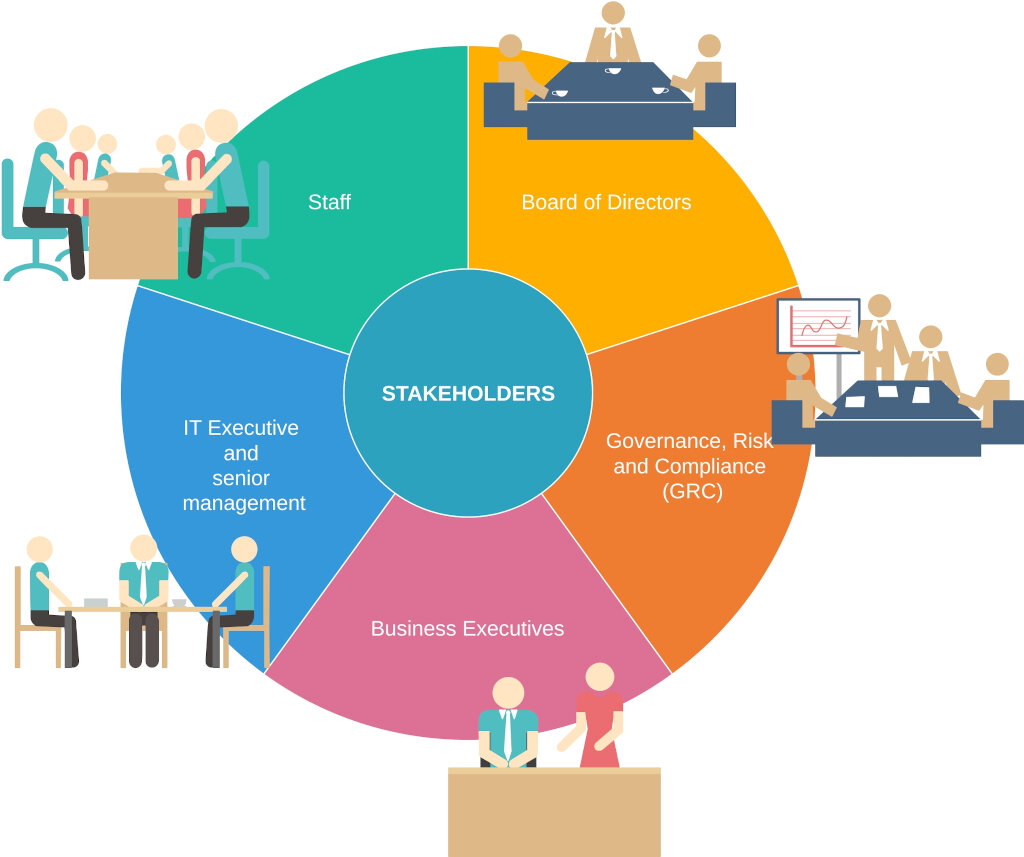A well-crafted business plan is crucial for the success of an organization. This goes beyond being just a roadmap and serves as a powerful tool to engage various stakeholders. Whether it’s investors, employees, customers, or partners, each group has unique interests that need to be addressed in your business plan. In this article, we will discuss strategies to customize your business plan for different stakeholders.
To guide you through the process of tailoring your business plan to the diverse needs and expectations of your stakeholders, use this business plan outline as a valuable reference.

Who Are Your Stakeholders?
To create a successful business plan that caters to the needs of all stakeholders, obtain a deep understanding of who they are and what drives them. Investors seek high returns, employees yearn for job security, customers demand value, and partners seek mutually beneficial collaborations. Acknowledging these diverse interests plays a pivotal role in developing a plan that resonates with each group’s unique aspirations. A strategy centered solely around investors without addressing employee concerns or one focused solely on customers without considering potential partnerships can result in disappointing outcomes.
Key Components of a Business Plan
After knowing who your key stakeholders are and what motivates them, the next step is to understand the critical components that constitute a comprehensive business plan. Here are the key components to be mindful of:
- Executive Summary: This section provides a brief summary of your business, outlining its mission, goals, and unique value proposition.
- Company Overview: A detailed description of your company’s history, structure, and core values.
- Market Analysis: An in-depth examination of your industry, market trends, competition, and target audience.
- Value Proposition: This highlights the unique features and benefits of your product or service. This clearly communicates why customers should choose your offering over competitors.
- Financial Projections: Forecasts of revenue, expenses, and profit over a specified period, providing insights into potential returns.
- Marketing and Sales Strategy: This section outlines your plans for promoting and selling your products or services. This also covers strategies for acquiring and retaining customers.
- Operational Plan: Details about the day-to-day functioning of your business, including processes, resources, and milestones.
- Management Team: Profiles of key team members, their roles, and expertise.
- Risk Assessment: Identification and mitigation strategies for potential challenges and uncertainties.
- Exit Strategy: A plan outlining how stakeholders can eventually exit the business, providing clarity for investors.
Adapt the Business Plan for Investors
For many ventures, investors play a crucial role by providing the necessary funds. Investors are particularly interested in potential returns, growth prospects, and risk management. Therefore, focus your plan on financial projections that demonstrate promising ROI. Highlight market opportunities, competitive advantages, and exit strategies to instill confidence in potential backers. Addressing these financial aspects satisfies investors’ desire for measurable gains while showing your dedication to minimizing risks.
Craft an Employee-Centric Business Plan
Employees, the backbone of your organization, seek job stability, career growth, and a positive work environment. An employee-centric business plan should reflect these priorities. Share your company’s mission and vision to instill purpose, and outline career development initiatives that underscore growth opportunities. Explicitly articulating your organization’s culture and the benefits it offers employees creates a strong connection, fostering loyalty and commitment.
Engage Customers through the Business Plan
Customers, the end-users of your products or services, hold immense power. Integrating customer-centric elements into your plan can solidify their loyalty. Clearly articulate the value of your offerings, highlighting how they fulfill customers’ needs and address their challenges. Additionally, integrating processes for collecting and acting upon customer feedback showcases your dedication to constant enhancement, fostering trust, and building a strong brand connection.
Tailor the Plan for Strategic Partnerships
In today’s interconnected business landscape, strategic partnerships play a crucial role in driving growth and fostering innovation. When developing a partnership plan, emphasize the mutual benefits of collaboration. Clearly articulate how the partnership enhances value propositions for both parties involved. Highlighting the strategic alignment and potential synergies can establish a strong foundation for long-term success. This tailored approach not only appeals to potential partners, but also highlights the strategic value of collaboration.
Maintain Transparency and Address Ethical Considerations
Finally, building lasting relationships with stakeholders relies on transparency and ethics. In an age where accountability is paramount, integrating transparency into your plan shows your commitment to open communication. Address ethical considerations in investor interactions and partnerships, showcasing your commitment to responsible business practices. This approach can lead to enhanced stakeholder trust and loyalty over time.
Acknowledging the multifaceted needs of investors, employees, customers, and partners, and weaving them seamlessly into your plan can propel your business toward sustained success. By adapting your plan to each stakeholder group, you demonstrate not only your understanding of their needs, but also your commitment to their satisfaction.